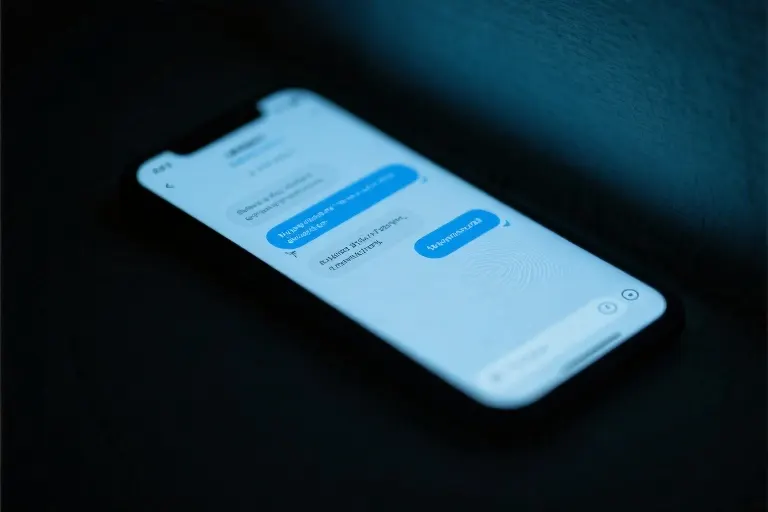The glow of your phone screen cuts through the darkness as you lie awake at 3:17 AM—again. Your thumb hovers over that carefully crafted message you’ve rewritten seven times, caught between the desperate need to connect and the paralyzing fear of seeming ‘too much.’ You delete the draft for the eighth time, exhaling sharply as your stomach knots. Across town, their phone sits undisturbed on silent mode while they sleep peacefully.
This isn’t how love stories go in movies. Where’s the dramatic reunion after your strategic three-day silence? The flood of messages when you posted that perfectly ambiguous Instagram story? The grand gesture you’ve been scripting in your head since Tuesday? Instead: radio silence. The louder your anxiety screams for connection, the further your avoidant partner retreats into their emotional bunker.
Here’s the hard truth your Google search history won’t tell you: Every ‘how to make him miss me’ tactic—the calculated delays, the social media performances, the cryptic song lyrics—isn’t just ineffective. It’s actively feeding the toxic dance of anxious-avoidant attachment.
When you compulsively check their last active status (2 minutes ago—why won’t they reply?), you’re not gathering intel. You’re handing your nervous system a live grenade. Those meticulously ‘casual’ photos you post? They’re not subtle hints—they’re survival strategies from an attachment system convinced it must manipulate to be loved. And that ‘if they cared, they’d chase me’ mantra? It’s setting you both up for failure, because avoidants don’t express love through pursuit—they express fear through withdrawal.
The cruel irony? Your attempts to soothe attachment panic (Do they miss me? Are they losing interest?) actually trigger their attachment panic (This is too much. I need space). What feels like loving persistence to you registers as emotional trespassing to them. This isn’t about effort or worth—it’s about two nervous systems speaking different dialects of intimacy.
Before you fall deeper into this sinkhole, let’s press pause on the performative games. The real question isn’t ‘Why won’t they chase me?’ but ‘Why am I convinced being chased is the only proof I’m loved?’ The answer might just rewrite your entire love story.
The Relationship Advice That’s Actually Making You More Anxious
We’ve all been there—scrolling through endless articles promising ‘Make Him Miss You in 3 Days!’ or ‘The Texting Trick That Always Works.’ You try the tactics: playing hard to get, crafting the perfect vague social media post, or suddenly becoming ‘too busy’ to reply. But instead of bringing them closer, your avoidant partner seems to retreat further into their shell.
The 3-Day Rule (And Why It Backfires)
The classic ‘wait three days before replying’ advice seems logical—give them space to miss you, right? But here’s what really happens with an avoidant partner:
- Their interpretation: They perceive your silence as confirmation that relationships are draining (their core fear)
- Your reality: Those 72 hours are spent overanalyzing every possible meaning behind their last ‘K’ text
- The result: Both of you feel more disconnected than ever
Case in point: @Lisa tried meticulously planning her ‘busy but fascinating’ schedule to share online—‘Look how little I need you!’—only for her avoidant boyfriend to comment ‘Glad you’re keeping busy’ and disappear for a week. What felt like strategy to her registered as relief to him.
Social Media Mind Games
That perfectly curated Instagram story showing you laughing with friends (but positioned so your ex’s best friend would definitely see it)? The poetic quote about ‘knowing your worth’ posted at 11:11pm? These aren’t subtle hints—they’re distress flares.
Why these tactics fail:
- Avoidants rarely decode social media subtext (they take posts at face value)
- Your ‘look how happy I am’ performance increases their guilt/shame
- Every check for their ‘like’ reinforces your anxiety cycle
The Nuclear Option: Cryptic Quotes & Passive Aggression
Posting ‘When someone shows you who they are, believe them’ at 2am might feel cathartic, but consider:
- Avoidants view emotional displays as ‘too much’
- Vague posts create confusion, not longing
- You’re left checking notifications instead of healing
Why These Strategies Backfire
At their core, these tactics share one fatal flaw: They’re designed to provoke a reaction rather than build connection. For avoidant partners:
- Silence = Peace (not longing)
- Social media = Information source (not emotional battleground)
- Neediness (even disguised) = Reason to withdraw
What anxious partners interpret as ‘making them miss me’ registers to avoidants as ’emotional pressure’—the exact thing that triggers their retreat response. The harder you try to demonstrate your worth through absence or hints, the more you confirm their belief that relationships require exhausting performance.
The Alternative Approach
Instead of manipulation tactics that increase distance, try:
- Direct but low-pressure communication: “I miss our conversations. Would you be up for coffee this week?” (No subtext, no games)
- Social media detox: Mute their profiles to break the anxiety cycle
- The 24-hour rule: Before posting anything relationship-related, wait one full day
The painful truth? If someone could be manipulated into loving you properly, they wouldn’t need manipulating in the first place. Your worth isn’t determined by their ability to decode your hints—it exists regardless of their response.
The Avoidant Attachment Survival Guide: Why They Emotionally Shut Down
You’ve memorized their texting patterns. That brief ‘online’ status that makes your heart race. The way they can go days without contact while you’re left analyzing every punctuation mark in their last message. If you’re reading this, you’ve probably asked yourself a hundred times: Why does someone who claims to care act so indifferent?
The Neuroscience of Emotional Retreat
Avoidant partners aren’t playing hard to get—their brains are literally wired to perceive intimacy as a threat. Research shows their amygdala (the brain’s alarm system) activates intensely during emotional conversations, triggering fight-or-flight responses. What feels like rejection to you is actually their nervous system screaming Danger!
Three key survival mechanisms:
- The Deactivation Switch: They unconsciously suppress attachment needs (“I don’t need anyone”) when closeness exceeds their tolerance threshold
- Emotional Airbags: Create psychological distance through behaviors like:
- Delayed responses (“I’ll reply when I’m ready” becomes 72 hours)
- Vague plans (“Maybe this weekend” with no follow-up)
- Relationship amnesia (Forgetting important dates/ conversations)
- The Withdrawal Loop: Your anxiety (“Why aren’t they responding?”) → Their overwhelm (“They’re too demanding”) → Increased distance
Decoding Common Avoidant Behaviors
Behavior: Ghosting after intimacy
What it feels like to you: Rejection
What’s happening for them: Post-vulnerability hangover—their system needs reset time after emotional exposure
Behavior: ‘Breadcrumbing’ (sporadic low-effort contact)
What it feels like to you: Hope
What’s happening for them: Checking connection safety—like dipping toes in cold water
Behavior: Deflecting serious talks
What it feels like to you: Avoidance
What’s happening for them: Preventing system overload—their ’emotional CPU’ crashes during direct conflict
The Core Paradox
Here’s what most articles get wrong: Avoidants do experience deep attachment—they just process it differently. Their distancing isn’t about you; it’s about regulating an overwhelmed nervous system. Studies using fMRI scans show their brains light up similarly to anxious partners during separation… they just suppress outward expressions.
Signs an avoidant actually cares (in their language):
- Remembering small details you mentioned weeks ago
- Indirect acts of service (Fixing something in your home without being asked)
- Rare but meaningful vulnerability (“I missed you” texts after space)
Why Your Strategies Backfire
Classic anxious approaches (demanding reassurance, ‘tests,’ emotional ultimatums) flood their already overstimulated system. Imagine blowing an airhorn at someone with a migraine—that’s how your “We need to talk right now” texts feel to them.
What NOT to do when they withdraw:
✖️ Flooding with messages (Triggers their ’emotional claustrophobia’)
✖️ Punitive silence (They’ll assume you’ve moved on)
✖️ Public displays (Social media posts about ‘loyalty’ feel like coercion)
Creating Space That Actually Helps
The counterintuitive truth? Giving structured space builds safety. Try:
- The 24-Hour Rule: Wait a day before addressing emotional concerns (allows their system to reset)
- Low-Pressure Check-Ins: “No need to reply now, but I’d love to hear your thoughts when you’re ready”
- Non-Verbal Reassurance: Leaving their favorite snack with a post-it (“Thought you might like this”) speaks louder than emotional discussions
Remember: Their retreat isn’t a referendum on your worth. As one client realized, “I kept waiting for him to love me like I needed—until I saw he’d been loving me how he could.”
The Myth of “Effort Equals Reward” in Anxious-Avoidant Relationships
We’ve all grown up with the comforting fairy tale that hard work gets rewarded. Study diligently, get good grades. Train relentlessly, win the game. Love intensely, receive love in return. But when you’re dealing with an avoidant partner, this fundamental life equation suddenly stops working—and that’s when the real heartbreak begins.
The Emotional Mismatch That Feeds the Cycle
Picture two dancers moving to completely different rhythms. That’s essentially what’s happening between anxious and avoidant attachment styles. While you’re wired to seek closeness as reassurance (“If they care, they’ll chase”), they’re biologically primed to interpret that very pursuit as threat (“If I get closer, I’ll lose myself”).
Key differences in emotional needs:
- Anxious Craving: Regular reassurance → Avoidant Interpretation: Smothering
- Anxious Signal: “I miss you” texts → Avoidant Reaction: Pressure to perform
- Anxious Solution: More communication → Avoidant Solution: More space
This creates what psychologists call the pursuit-distance cycle, where every attempt to bridge the gap actually widens it. That Instagram story you painstakingly curated to show your “cool independence”? To an avoidant, it registers as emotional noise they instinctively mute.
Why Your “Proof of Love” Tests Backfire
Most anxiety-driven strategies fail because they operate on three flawed assumptions:
- The Empathy Fallacy: “If I feel intensely, they must too” (Spoiler: Avoidants process emotions differently)
- The Fairness Doctrine: “I’d do it for them, so they should do it for me” (Their boundaries aren’t about you)
- The Deficit Model: “They’d act right if they loved me enough” (Love isn’t the issue—capacity is)
Real-talk moment: When you initiate the 3-day no contact rule hoping they’ll panic and chase, an avoidant partner often experiences it as… relief. Not because they don’t care, but because their nervous system literally registers solitude as safety.
Rewriting the Relationship Algorithm
The breakthrough comes when you stop asking “How can I make them act differently?” and start asking “Why do I need them to?” This isn’t about blame—it’s about recognizing that your anxiety and their avoidance are flip sides of the same coin: fear of authentic connection.
Try this reframe instead:
- Old script: “If they loved me, they’d text first” → New lens: “My worth isn’t measured by their response time”
- Old script: “I’ll pretend not to care” → New lens: “I’ll genuinely care for myself first”
The Paradoxical Truth
Here’s the liberating secret no mainstream relationship advice will tell you: The less you need an avoidant to prove their love, the safer they feel to show it. This doesn’t mean becoming cold or indifferent—it means developing what therapists call a “secure base” within yourself.
Immediate action step: Next time you feel the urge to send that “Hey stranger 😏” text after radio silence, pause and ask: “Am I seeking connection or just reassurance?” Then try journaling the answer instead.
Remember: You can’t negotiate attachment styles like contract terms. Real change begins when you stop performing for love and start believing you’re worthy of it—whether they ever validate you or not.
Rebuilding the Interaction Pattern: A Fresh Start
The Art of Non-Threatening Communication
You’ve mastered the art of strategic silence. You’ve perfected the Instagram story that says “I’m living my best life (but still available for you).” You’ve even tried the dramatic exit – only to find your avoidant partner didn’t come running after you like in the movies.
Here’s what changes when we shift from manipulation to authentic connection:
1. The Words That Actually Work
Instead of:
“Why haven’t you texted me back?” (accusatory)
Try:
“I notice I feel anxious when messages go unanswered. Could we agree on a rough response time?” (owning your feelings + concrete request)
Instead of:
Posting a vague song lyric about heartbreak
Try:
“I’d like to understand what’s happening between us. When would be a good time to talk?”
Why this works: Avoidants don’t respond to pressure – they respond to emotional safety. By removing hidden demands and stating needs directly (but calmly), you’re speaking their language.
2. The 24-Hour Buffer Rule
When you feel that familiar panic rising (“He left me on read! Must fix now!”), try this:
- Hour 0-1: Acknowledge the anxiety physically (“My chest feels tight, my palms are sweating”)
- Hour 1-4: Do a grounding exercise (name 5 blue objects around you, feel your feet on the floor)
- Hour 4-24: Write (but don’t send) all your frantic thoughts in a notes app
Only after this buffer period do you decide if the message still needs sending. 80% of the time, you’ll realize your initial reaction was anxiety-driven.
The Magic of Predictable Patterns
Avoidants crave predictability more than passion. Try these consistent behaviors instead of dramatic gestures:
- Texting: Establish routines (“Good morning” texts only if you can commit to them daily)
- Quality Time: Schedule short, regular meetups (Tuesday coffee) rather than spontaneous marathons
- Conflict: Address issues in bullet points via text first, allowing them processing time before verbal discussion
Remember: For avoidants, “I miss you” feels safer when preceded by “I respect your space.” Try: “No need to respond right away, but I wanted you to know I’m thinking of you.”
Your Immediate Action Plan
Stop today:
- All social media “hints” (liking old photos, cryptic posts)
- Testing their interest (“I’ll wait to see if they initiate”)
- Over-analyzing their response times
Start today:
- One clear, low-pressure communication (“I’d enjoy hearing about your week when you’re free”)
- One self-soothing activity when anxiety spikes (yoga, calling a friend, cooking)
The paradox: The less you need them to prove their care, the safer they feel to show it – in their own way, in their own time. Your new superpower? Being okay with that.
The Exit Plan: Breaking Free from the Anxious-Avoidant Trap
Let’s start with a hard truth: everything you’ve been doing to “make them miss you” has been secretly working against you. Those late-night Instagram story calculations? The strategic three-day gaps between texts? The carefully curated “look how happy I am without you” posts? They’re not just ineffective—they’re actively feeding the very cycle you’re trying to escape.
3 Behaviors to Stop Immediately
- The Disappearing Act (a.k.a. Testing Their Attachment)
That “if they care, they’ll chase me” mentality? It’s based on a fundamental misunderstanding of how avoidant attachment works. While you’re counting the hours of radio silence as proof they should be missing you, they’re likely experiencing your absence as… relief. Not the romantic tension you imagined. - Social Media Mind Games
Posting that ambiguous song lyric or “accidentally” being tagged at fun locations? Avoidants don’t decode hints the way anxious types do. What you intend as a nudge often registers as either background noise or emotional manipulation—neither of which builds trust. - The Over-Analysis Spiral
Rereading texts for hidden meanings, consulting friends about punctuation choices, tracking their last active status—these aren’t relationship strategies. They’re anxiety rituals that keep you emotionally hostage to someone else’s unpredictability.
1 New Behavior to Start Today
The Direct Yet Non-Threatening Request
Instead of testing their attachment through silence, try this script when you need reassurance:
“I’ve noticed I feel uneasy when conversations stop suddenly. Could we agree that if you need space, you’ll say something like ‘I need a day to process’? That would help me respect your boundaries without worrying.”
This approach works because it:
- Names your need without blame
- Gives them an explicit (and easy) way to participate
- Avoids triggering their defense mechanisms
The Ultimate Question
Now comes the real work. Ask yourself: “If I no longer needed their behavior to prove I’m lovable, what would I do differently today?”
Maybe it’s:
- Texting first without rehearsing the message
- Spending an evening offline without performance anxiety
- Deleting that draft of a “perfect” response you’ve been obsessing over
This isn’t about changing them—it’s about reclaiming the parts of yourself you’ve handed over to someone else’s inconsistency. The paradox? That’s exactly what makes healthy connection possible.





